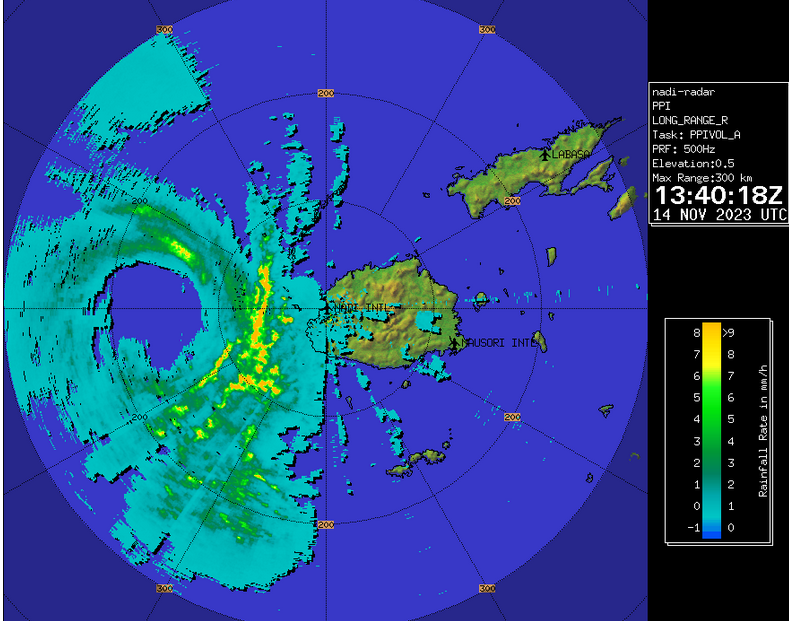Tropical Cyclone Mal moved south of Fiji during Tuesday night. At 10:00 a.m. EST on Wednesday the center of Tropical Cyclone Mal was located at latitude 23.2°S and longitude 179.0°E which put it about 310 miles (500 km) south of Suva, Fiji. Mal was moving toward the south-southeast at 14 m.p.h. (22 km/h). The maximum sustained wind speed was 75 m.p.h. (120 km/h) and there were wind gusts to 90 m.p.h. (145 km/h). The minimum surface pressure was 984 mb.
Strong vertical wind shear and cooler Sea Surface Temperatures caused the structure of Tropical Cyclone Mal to start to change during Tuesday night. An eye was not longer present at the center of Mal’s circulation. Thunderstorms were occurring in bands in the southeastern part of Tropical Cyclone Mal. Bands in the other parts of Mal’s circulation consisted primarily of showers and lower clouds. Tropical Cyclone Mal was in the process of making a transition to an extratropical cyclone.
The size of the circulation around Tropical Cyclone Mal increased when it started to make a transition to an extratropical cyclone. Winds to hurricane/typhoon force extended out 50 miles (80 km) from the center of Mal’s circulation. Winds to tropical storm force extended out 200 miles (320 km) from the center of Tropical Cyclone Mal.
Tropical Cyclone Mal will move into an environment that will be unfavorable for intensification of a tropical cyclone during the next 36 hours. Mal will move over water where the Sea Surface Temperatures are near 24°C. It will move under the eastern side of an upper level trough over the Coral Sea. The upper level trough will produce northwesterly winds that will blow toward the top of Mal’s circulation. Those winds will cause strong vertical wind shear. The combination of cooler water and strong vertical wind shear will cause Tropical Cyclone Mal to weaken during the next 36 hours. Mal will continue to make a transition to an extratropical cyclone.
The upper level trough over the Coral Sea will steer Tropical Cyclone Mal toward the southeast during the next 36 hours. On its anticipated track, Tropical Cyclone Mal will continue to move farther away from Fiji.

